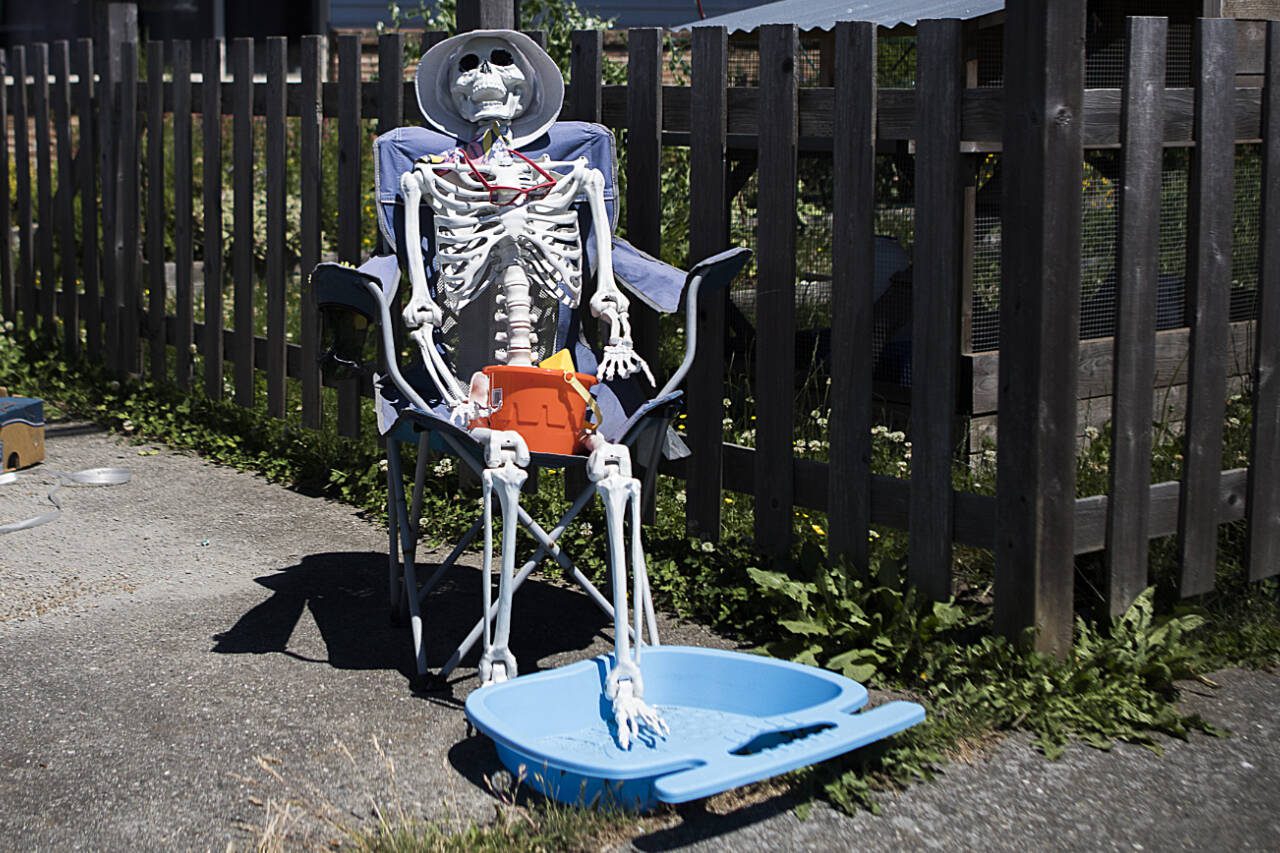By The Herald Editorial Board
This weekend marks two years since the 2021 Northwest Heat Dome, a record-breaking stretch of extreme heat between June 27 and July 3 that year when temperatures throughout the Pacific Northwest hit 100 degrees Fahrenheit and hotter, contributing directly and indirectly to some 440 deaths in Washington state.
A new report from a team of researchers and others at the University of Washington, Gonzaga University and state departments of Health and Climatology, warns that extreme heat disasters such as the 2021 heat dome — a weather event where the high atmospheric pressure traps hot air above a region, such as the one now parked above the nation’s Southeast — are becoming more common, especially in areas where extreme heat days of high humidity and temperatures above 90 degrees were once rare.
The report — In The Hot Seat: Saving Lives from Extreme Heat in Washington State — urges action by state and local government officials, community organizations, health professionals and individuals to pursue a portfolio of strategies to address health and other risks of future extreme heat events.
Most residents in much of Western Washington, in particular Snohomish, King and Pierce counties are unaccustomed and unprepared for extreme heat, write professors Jason Vogel of the UW and Brian G. Henning of Gonzaga, in a recent article written for The Conversation. Nearly two-thirds of households earning $50,000 or less and 70 percent of rental units in the three counties have no air conditioning.
“Imagine having no way to cool your home as temperatures spiked to 108 degrees Fahrenheit, and 120 F in some places,” they write. “People in urban heat islands — areas with few trees and lots of asphalt and concrete that can absorb and radiate heat — saw temperatures as much as 14 degrees F higher than that.”
While the conditions that produce the 2021 heat dome are rare — and should happen only once every 10,000 years, according to a study in the journal Geophysical Research Letters — other weather phenomena, such as periodic El Niños, and climate change itself are increasing the likelihood of extreme heat events in the Northwest.
The “Hot Seat” report notes that between 1971 and 2021, Washington state saw an average of three extreme heat days a year. Projecting climate changes between now and the 2050s, the report says, the models show that against a background increase of summer temperature between 4 degrees and 6 degrees Fahrenheit, the number of extreme heat events could increase to between 17 and 30 days each year.
Even without a heat dome, warmer than typical weather is possible this year and next in the Northwest as the current La Niña weather pattern, with cooler and wetter weather for the region, gives way to El Niño and its generally warmer and drier conditions for the Northwest.
The shifts between the two weather patterns, caused by changes in wind strength and ocean temperatures, influence climate globally. The last major El Niño from 2014 to 2016, led to those years breaking global temperature records; 2016 remains the hottest year ever recorded, The Guardian reported last month.
And a period of strong El Niño years would coincide with a general increase in worldwide temperatures. In mid-June, worldwide temperatures for an 11-day period exceeded the 1.5 degree Celsius threshold recognized as key to avoiding the worst impacts from global climate change, the Associated Press reported in June. Those temperatures have since eased, and that 1.5 C increase would have to be sustained for a much longer period to breach the limits set by the Paris Agreement, but El Niño could again push global temperatures higher and for longer, again breaking records.
Whether heat dome or heat wave, periods of high temperatures will pose challenges for local communities in the Northwest. The report notes that beyond direct health concerns, such as heat exhaustion and stroke, high temperatures can make chronic health issues, such as heart and kidney diseases worse and can complicate pregnancies, increasing 911 calls and ER visits. As well, heat can cause significant individual and collecting economic costs in responding to those events.
Reducing vulnerability to extreme heat events will require a focus on short-term emergency response, including warning systems and cooling centers; and longer-term planning and preparation that provide worker health and safety protections, resilient health care surge capacity and infrastructure and roof gardens and tree canopy to reduce the effect of “urban heat islands.”
The report also recommends that the state Department of Commerce expand its current programs for energy assistance to include financial aid for cooling and air conditioning to lower income families and individuals.
Though not a part of the report’s recommendations, there’s a role as well for the state Climate Commitment Act’s new carbon cap-and-invest program that is now generating revenue by selling carbon emission allowances to major polluters and investing in clean energy and pollution reduction projects. Among the early investments have been programs for rebates to replace traditional home furnaces with electric heat pumps, which can help cool homes as well as heat them. A further expansion of that program would make sure more residences are comfortable year-round.
It may indeed be another 10,000 years before the Northwest sees a “heat dome” like that of 2021, but extreme heat events could always be just days away. We need to be ready to beat that heat.
Talk to us
> Give us your news tips.
> Send us a letter to the editor.
> More Herald contact information.

























